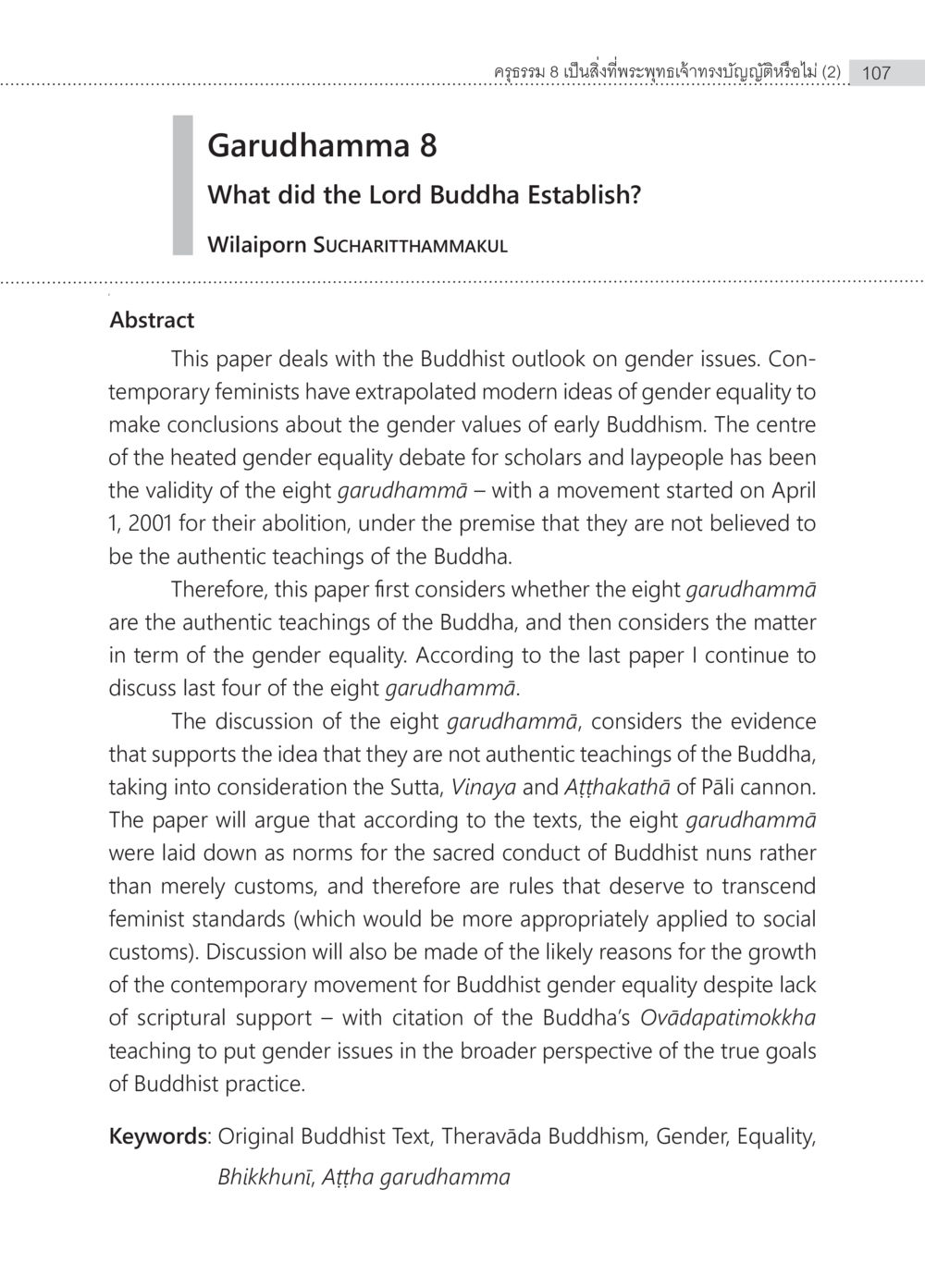Garudhamma 8: Exploring Gender Issues in Buddhism : หน้า 3/83
ครุธรรม 8เป็นสิ่งที่พระพุทธเจ้าทรงบัญญัติหรือไม่ (2) : หน้า 3/83 This paper explores gender equality in Buddhism, focusing on the authenticity of the eight garudhamma and their relevance in contemporary discussions on gender norms.
2 ครั้ง

สรุปเนื้อหา
This paper examines the Buddhist perspective on gender issues, particularly the eight garudhamma, which have been contested in modern debates around gender equality. It investigates whether these teachings are authentically from the Buddha, arguing that they were intended as guidelines for Buddhist nuns' conduct rather than mere customs. The paper analyzes historical texts, including the Sutta, Vinaya, and Aṭṭhakathā of the Pāli canon to provide context for the garudhamma and discusses the feminist movement aiming to reform these norms against the backdrop of traditional teachings. Additionally, it looks at the reasons behind the demand for Buddhist gender equality despite the lack of clear scriptural backing, referencing the Buddha’s Ovàdapatimokkhā teachings as a means to contextualize gender concerns within the broader objectives of Buddhist practice.
หัวข้อประเด็น
-Buddhist Gender Issues
-Authenticity of Garudhamma
-Impact of Feminism on Buddhism
-Historical Context of Buddhist Teachings
-Guidelines for Buddhist Nuns



















































































